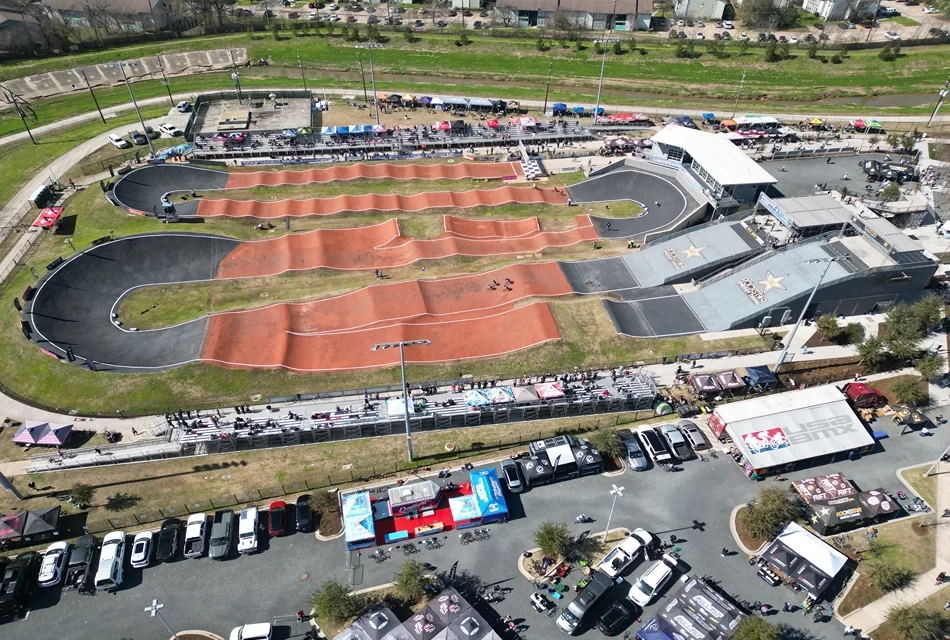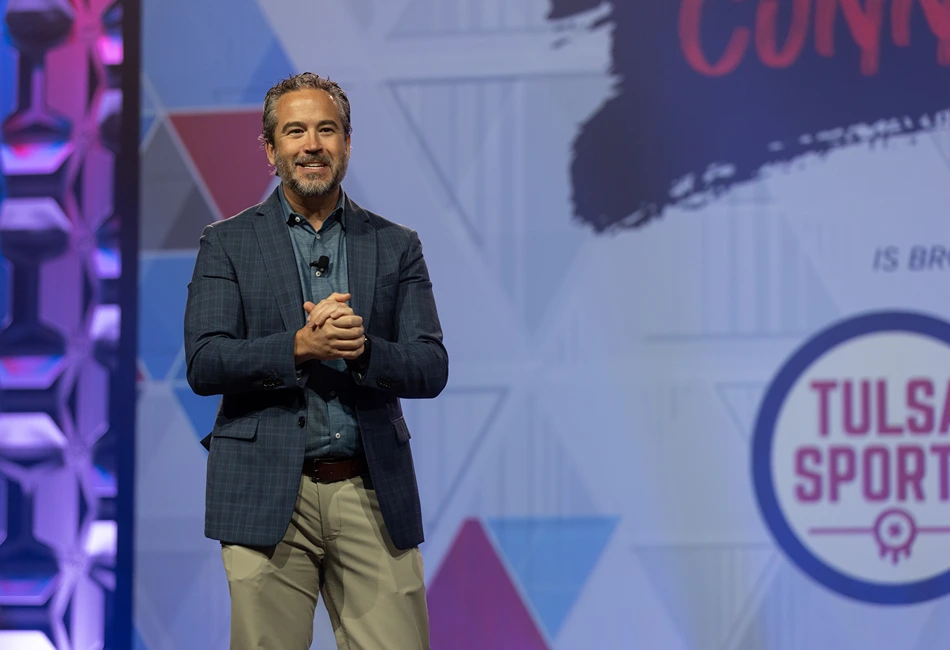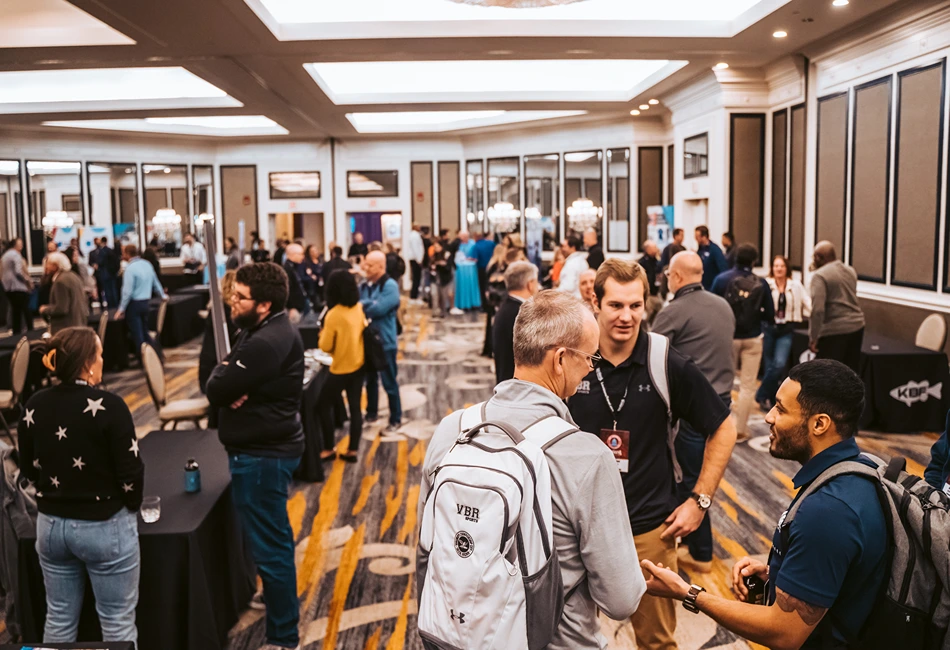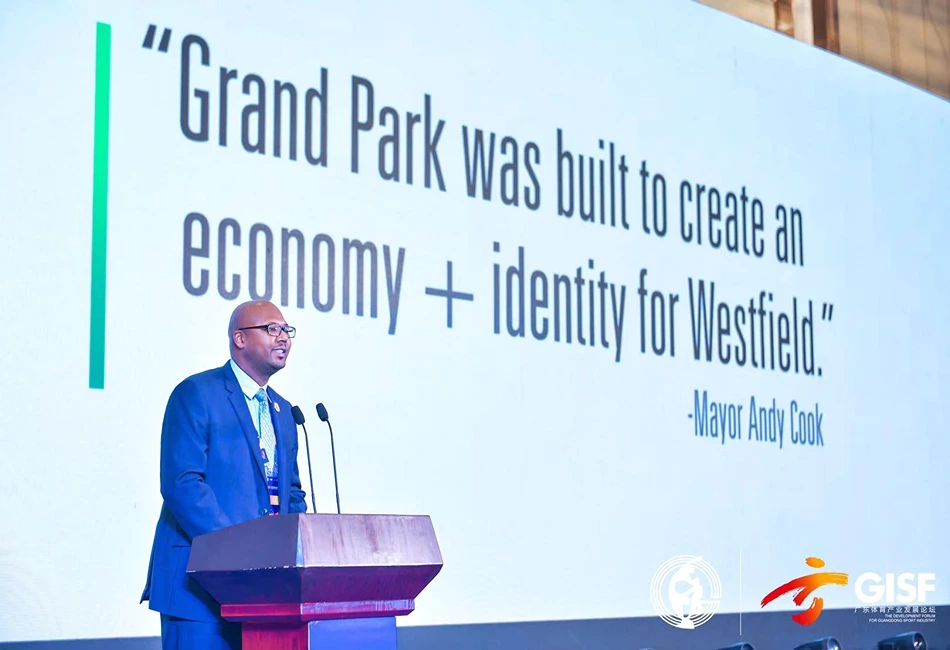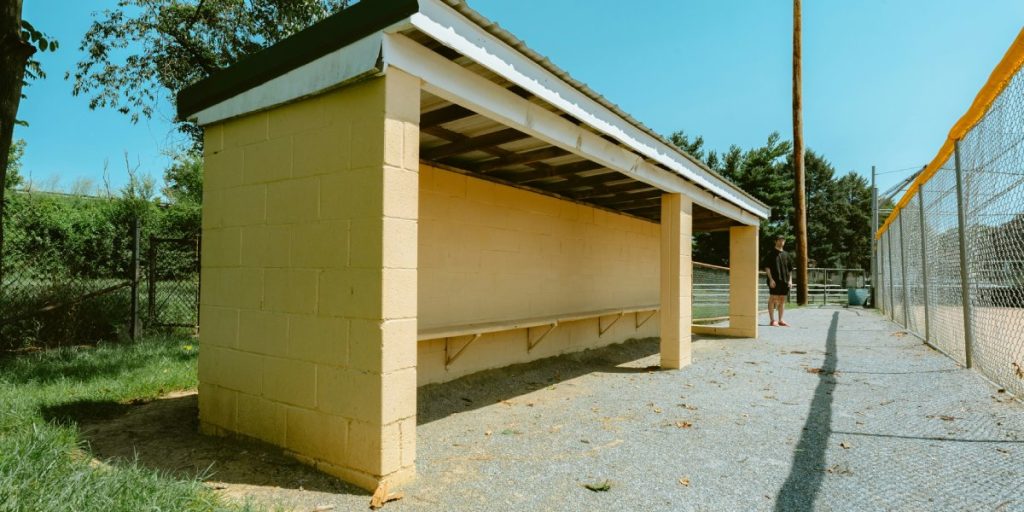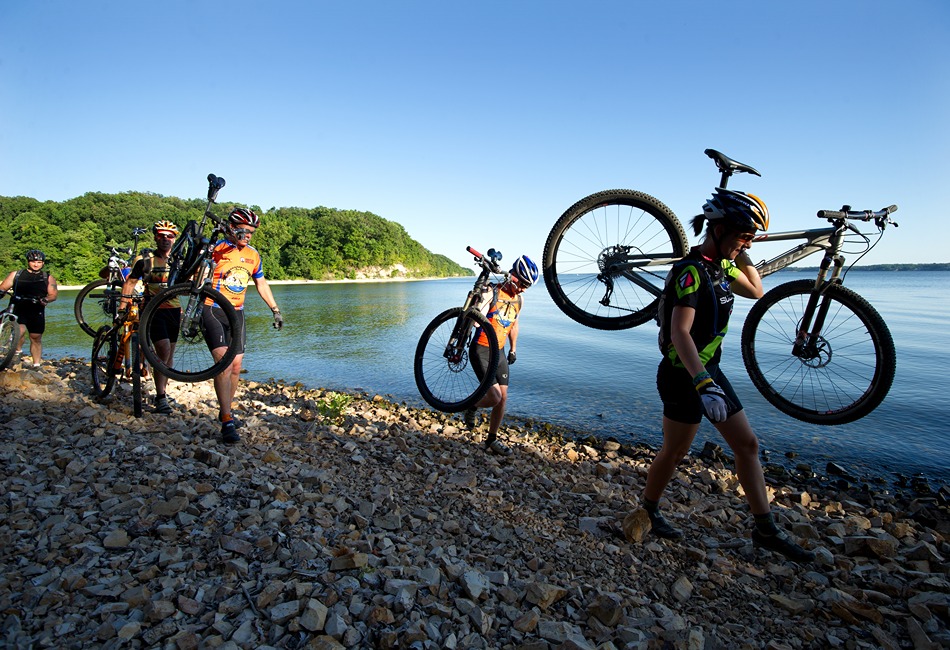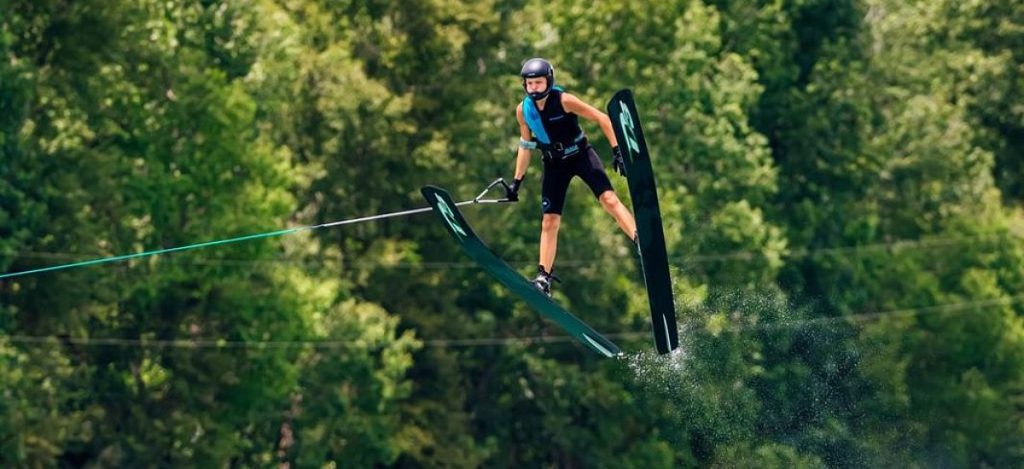Lined up at the starting gate, you hear the roar of the crowd growing louder and louder—a crescendo of claps, shouts and air horns building anticipation.
By USA BMX / American Bicycle Association
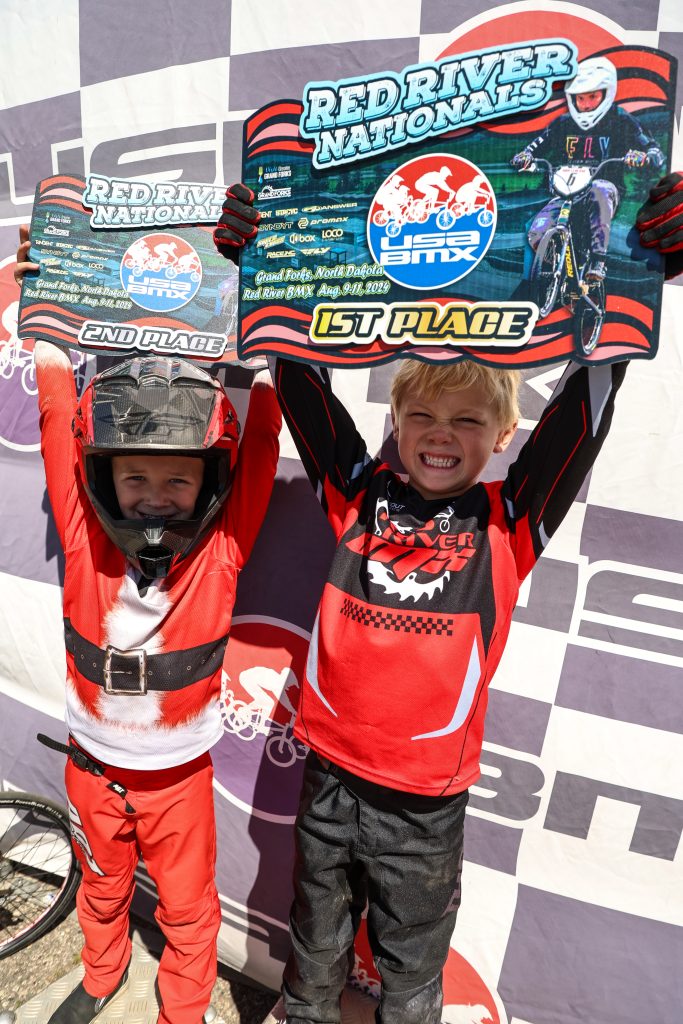
“Riders ready, watch the light,” the announcer warns. Seconds later, a loud beep emits as the gate drops, propelling you forward onto the dirt track. The wind whistles in your ears as you gain speed, rounding the berms and pedaling mightily on the straightaways toward the finish line—and, ideally, a spot on the podium. The crowd explodes as you narrowly edge out the rider on your right, earning you high-fives and kudos from your fellow riders as well as the admiring supporters filling the stands.
While this is a scene that plays out on the world stage—like last year’s Olympic Games in Paris, for example—it is also happening right now at your local BMX track.
That same level of excitement—which most fans describe as an all-out 10—is undeniable at the more than 300 BMX tracks across the country sanctioned by USA BMX, the world’s largest BMX racing organization. Every week, these volunteer-run tracks pave the way for BMX riders of all ages to experience BMX riding for the first time, or the thousandth time.
It is at these local tracks where riders and families become a community. It’s a place where everyone is welcome and encouraged.
It’s at these local tracks where tomorrow’s world champions begin their BMX journey.
BMX in Local Communities
At its heart, BMX racing is as much about community as it is about competition. On any given weekend, families gather at local tracks—lawn chairs in tow, coolers packed and team tents popped up—ready to cheer on riders of all ages. It’s not uncommon to see toddlers taking their first steps into the sport on balance bikes, while parents volunteer as gate operators, concession helpers and race officials.
Tracks become more than just places to ride—they become second homes. Friendships are forged not just between riders, but entire families. There’s a shared sense of support that spans across state lines and competition levels. The sport’s culture is built on encouragement, respect and helping one another get better—on and off the track.
“It has kept us strong as a family,” said one parent from Pennsylvania. “You look back at photos of some of these kids racing, and my goodness, they were little peanuts on the podium. What’s so great about this community is the ability to support each other.”
From small towns to urban neighborhoods, BMX offers a powerful, positive outlet where kids feel like they belong—and where every rider, no matter their background, has a shot at greatness.
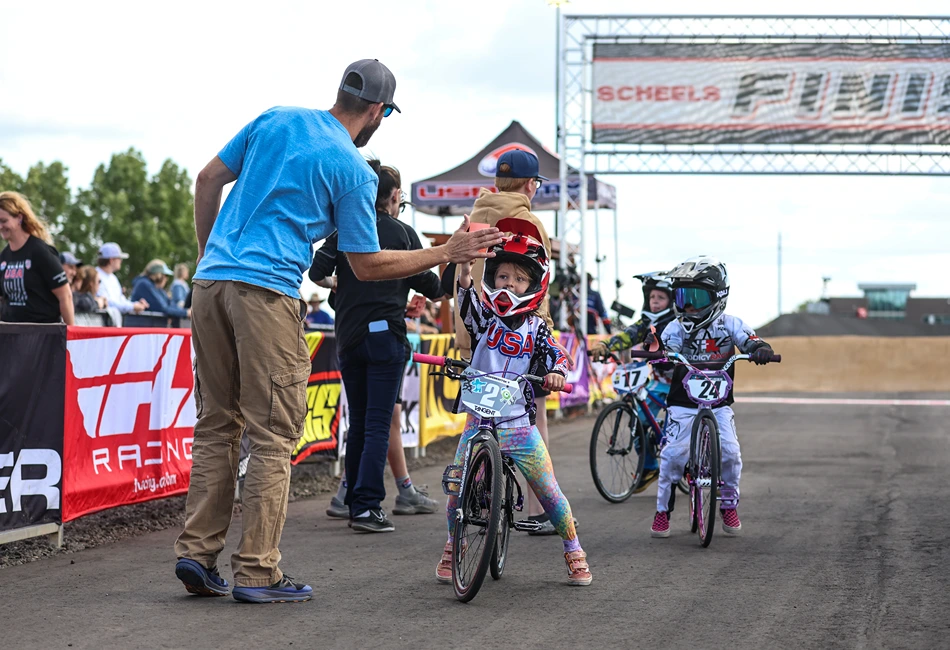
The Stairway to Success: A Place for Every Rider
One of the most unique things about BMX racing is its inclusiveness. Whether you’re 3 or 63, brand new or a seasoned rider, there’s a place for you on the track. It’s a sport designed with progression in mind—a “stairway to success” that helps riders grow every step of the way.
Beginners start on balance bikes or in novice classes, learning the fundamentals of bike handling and track etiquette in a low-pressure environment. As they gain confidence, they move up to intermediate and expert levels, gradually taking on more technical tracks and fiercer competition.
For those who really catch the bug, the opportunities are endless. Avid riders can travel to state, regional and national races, racking up points and making friends across the country. And for those who want to go even further, there’s a clear path to the highest levels of international competition.
It’s this structure—welcoming to newcomers, yet aspirational for veterans—that makes BMX so magnetic. Riders can advance at their own pace, fueled by personal goals, peer support and the thrill of progress.
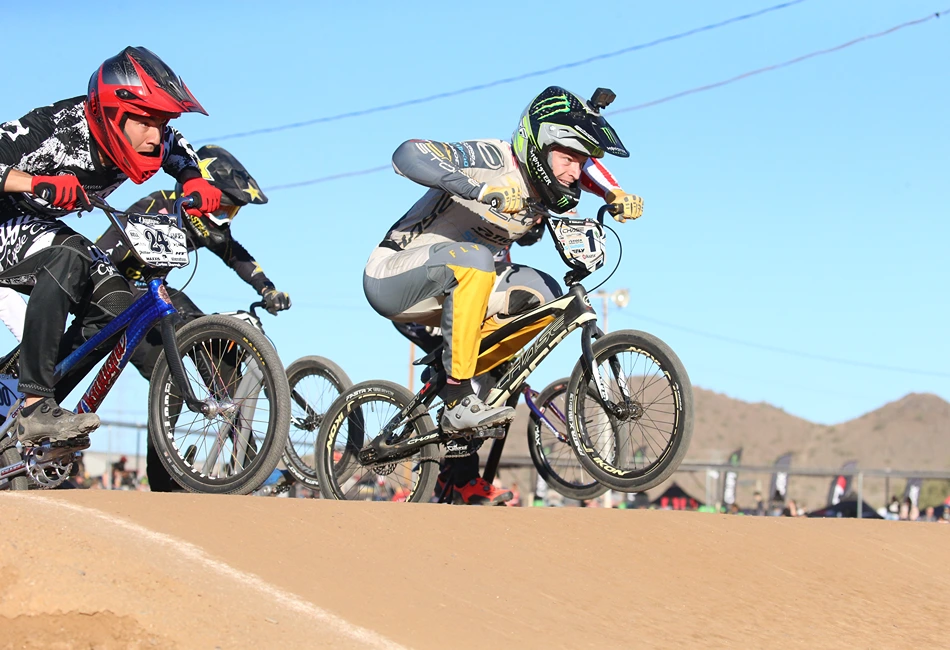
From Local Races to Olympic Dreams
Every Olympic dream starts somewhere—and for BMX riders, it often starts on a dusty local track under Friday night lights. USA BMX’s structured points system allows riders to earn local and district rankings based on performance throughout the year. Those rankings open doors to state championships, Gold Cup qualifiers, national races, and, ultimately, the opportunity to represent Team USA on the world stage.
Unlike some sports, where elite opportunities can feel elusive, BMX offers a clear, accessible ladder. That means the kid pedaling hard at your neighborhood track might one day line up against the best in the world at the UCI World Championships—or even the Olympics.
It’s a merit-based system built on commitment, consistency and heart, and because riders are grouped by both age and skill level, the sport keeps things competitive while ensuring everyone gets a fair shot at success.
“This sport is all about accountability,” said a track operator in Kentucky. “You can practice as a team, you have the community of other riders, but at the end of the day, you’re the only one on that bike. It’s also not something you can do without a true love and passion for the sport.”
One Olympian’s Story: Connor Fields
If there’s one rider whose story captures the spirit of BMX, it’s Olympic gold medalist Connor Fields. Hailing from Nevada, Fields first discovered the sport at age 7 when he showed up at his local track after seeing a flyer his mom brought home. What began as a weekend hobby quickly turned into a passion.
Through years of hard work, relentless training and community support, Fields climbed the ranks—local races, state titles, national competitions—until he earned a spot on Team USA. In 2016, he etched his name in history as the first American to win Olympic gold in BMX racing.
Fields’ rise wasn’t just about physical skill; it was about mental toughness, resilience and the strong foundation laid at his local track. Even now, post-retirement, he remains a powerful ambassador for the sport—mentoring young riders and promoting the values that shaped his journey.
His story is proof that with the right support, the right mindset, and the right community, anything is possible.
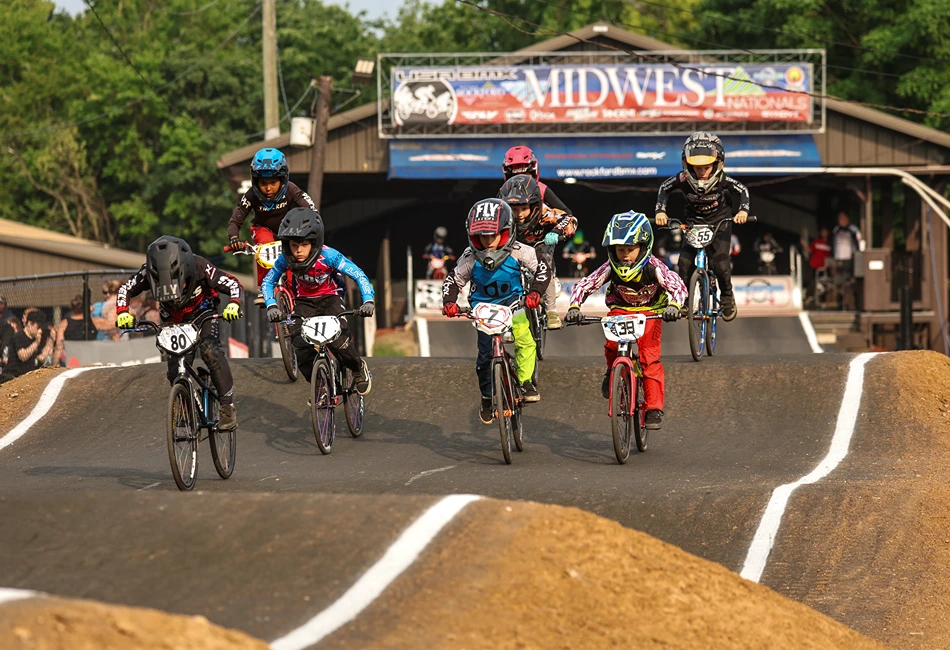
Looking Ahead: 2028 UCI BMX Racing World Championships and 2028 Olympic Games
The future of BMX racing is brighter than ever—especially with a global spotlight heading to the United States. In 2028, Houston’s H Town BMX Supercross Track will host the UCI BMX Racing World Championships, drawing the best riders from around the globe to one of the most impressive tracks in the world.
Opened in 2019, the 30-acre facility is more than just a racecourse; it’s a beacon for BMX development in the United States. As the largest BMX park in the country, it features both amateur and elite-level tracks, welcomes riders of all abilities and serves as a training ground for future stars.
Hosting the World Championships at H Town BMX Supercross Track isn’t just a win for Houston—it’s a celebration of how far the sport has come in America. From grassroots riders to Olympic hopefuls, the event will showcase the full stairway to success and reinforce BMX as one of the most thrilling, accessible and community-driven sports in the world.
What’s better than one global BMX showdown on U.S. soil? Try two! The 2028 Olympic Games are headed to Los Angeles—fittingly, the very birthplace of BMX racing. It’s a full-circle moment for the adrenaline-fueled sport, as the world’s fastest riders return to where it all began, chasing gold under the California sun and reigniting the energy of the sport’s roots on the biggest stage of all.
Next Stop: Your Local Track
BMX racing is fast. It’s fun. It’s a little bit wild. But above all, it’s a gateway—to confidence, to community, to global opportunity. Whether you’re a curious first timer, a passionate parent, or a lifelong fan, there’s room for you at the track.
Head out to a local race. Watch the gate drop. Feel the energy. Meet the riders. Because every champion—from Connor Fields to the future stars of Team USA—starts with a single lap. Yours could be next.

